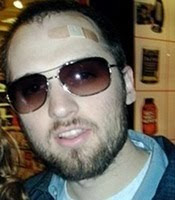An artist’s personal expression can produce greatness, but sometimes market competition can achieve the same result. After Disney made history with Snow White and the Seven Dwarfs, the first full-length MGM responded by investing heavily into a family film one of its own literary properties. Despite marginal success upon its initial release, The Wizard of Oz might be the most watched movie in history. Two key creative decisions transformed this adaptation of L. Frank Baum’s novel into a classic that would be revisited by each generation. The first idea was an unqualified stroke of genius: to film Dorothy’s Kansas home in sepia-tones before transitioning to Oz with brilliant Technicolor in all the shades of the rainbow. For children today, who have never seen a black-and-white film before Oz, the Gale’s Dust Bowl farm even takes on a dream-like quality of its own, every bit as alien as the fantasy land of Oz. Even seventy years later, there might not be any film that benefits more from the use of color to define locations, characters, and events. Second, converting children’s literature into a musical was quite a gamble. Arlen and Harburg managed to avoid the fatal flaw of the musical genre, tacked-on songs that interrupt and prolong the story rather than enhance it. Judy Garland’s performance of “Over the Rainbow” so accurately conveys the sense of childhood longing, both gloomy and cheerful, that it deserves its reputation as the greatest original song ever on film.
Saturday, August 21, 2010
The Wizard of Oz (1939, Victor Fleming)
An artist’s personal expression can produce greatness, but sometimes market competition can achieve the same result. After Disney made history with Snow White and the Seven Dwarfs, the first full-length MGM responded by investing heavily into a family film one of its own literary properties. Despite marginal success upon its initial release, The Wizard of Oz might be the most watched movie in history. Two key creative decisions transformed this adaptation of L. Frank Baum’s novel into a classic that would be revisited by each generation. The first idea was an unqualified stroke of genius: to film Dorothy’s Kansas home in sepia-tones before transitioning to Oz with brilliant Technicolor in all the shades of the rainbow. For children today, who have never seen a black-and-white film before Oz, the Gale’s Dust Bowl farm even takes on a dream-like quality of its own, every bit as alien as the fantasy land of Oz. Even seventy years later, there might not be any film that benefits more from the use of color to define locations, characters, and events. Second, converting children’s literature into a musical was quite a gamble. Arlen and Harburg managed to avoid the fatal flaw of the musical genre, tacked-on songs that interrupt and prolong the story rather than enhance it. Judy Garland’s performance of “Over the Rainbow” so accurately conveys the sense of childhood longing, both gloomy and cheerful, that it deserves its reputation as the greatest original song ever on film.
Labels:
1939 The Wizard of Oz
Subscribe to:
Post Comments (Atom)



No comments:
Post a Comment